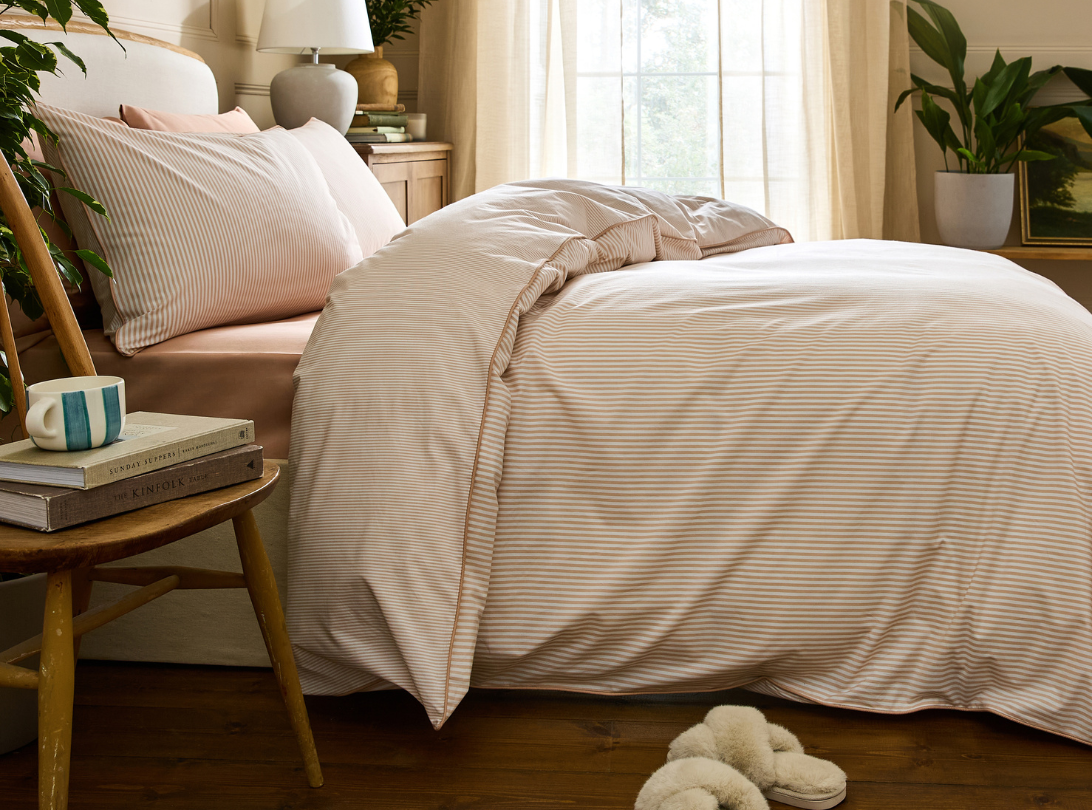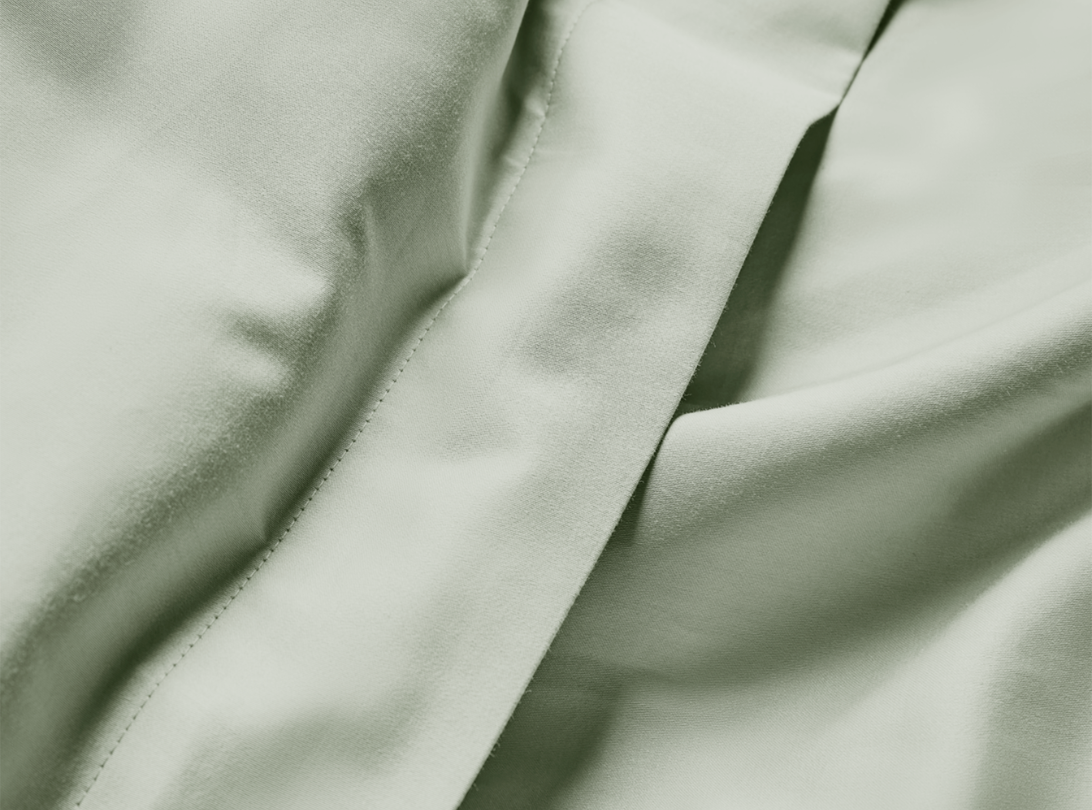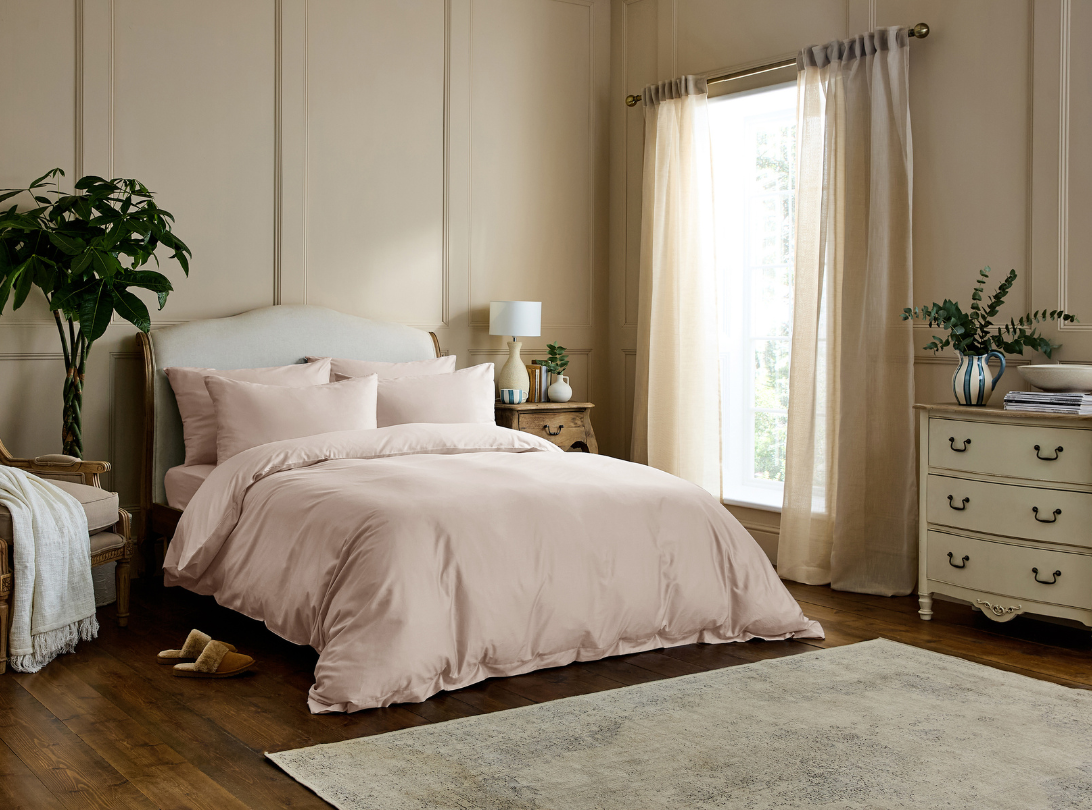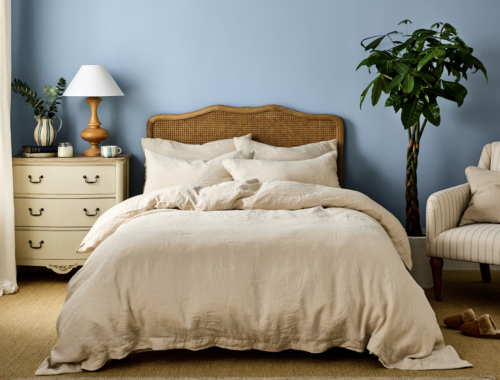
how to sleep well with pesky allergies (dust mites, hay fever & more)
Oh, allergies—the sneaky disrupters of our blissful sleep. The tossing and sneezing, the frequent itching, the groggy mornings they cause. And no matter how much of a routine cleaner you are, their invisible persistence can be difficult to tackle!
But don’t worry, consider our experts the fountain of sleep knowledge you need for an allergy-alleviating bedtime refresh…
which allergens are most common in the home?
From pollen, dust mites and pet dander, our homes can host quite the fiesta of unwelcomed guests. According to the official NHS playbook, our bedrooms can actually be the perfect environments for irritants to thrive, and studies show that around 15% of us in the UK experience indoor allergies.

So, cue some hassle-free changes that will help you create a healthy sleep environment and leave your space feeling fresher than a spring breeze!
avoid synthetic bedding fabrics
Synthetic fabrics such as polyester can prevent healthy airflow, trapping heat and moisture which allows for dust mites and mould to thrive. Both are common allergens that trigger symptoms like itchy eyes, runny nose, and sneezing.
And that’s not all. Synthetic fabrics are also more likely to irritate sensitive skin due to the toxic chemicals within them. No thank you!
choose breathable, natural bedding
On the other hand, naturally sourced, hypoallergenic bedding promotes airflow and keeps your body temperature regulated – creating a barrier that tiny pests dislike.

At Dip & Doze, our hypoallergenic organic cotton and natural linen bedding fabrics are slow-made to the highest quality standard, without the use of any harmful chemicals. This way, you can be rest assured that air circulates like a gentle whisper, and trapped moisture bids adieu!
Made from 100% natural materials and finished without any hash, harmful dyes, it will also take wonderful care of your precious skin (no matter your skin type).
wear breathable, natural clothing
Temperature-regulating nightwear is also essential in helping reduce allergen build-up and ensure a more comfortable night’s sleep.
Just be sure to wash them regularly to fend off even the sneakiest allergens!
stick to a regular laundry cycle
A dash of advice: wash your PJs at least once a week, and your bedding sheets at least once a month—or twice a week if you fall victim to particularly bad allergies. This not only significantly reduces allergy and hay fever symptoms which flare up at night, but also keeps your sleep sanctuary blissfully fresh and helps to minimise skin irritation. Consider washing pillowcases even more frequently (we recommend once to twice a week) to keep your precious face skin cared for.
See our handy organic cotton care guide and natural linen care guide for the lowdown on looking after your beautiful night-time companions!
keep the pet fur downstairs
Although our fluffy besties are amazing for cuddles, outdoor adventures, and unconditional love, they are sometimes the reason for our sneezy woes. Pet dander contains tiny flecks of skin shed by cats, dogs and other animals with fur or feathers, causing allergic reactions.
And while resisting those big puppy dog eyes can feel heart-wrenching at times, keeping pet fur out of your sleep space is essential for an allergen-free siesta! Give those fur babies extra snuggles in the living room before getting dressed for bed—your zzz’s will thank you later!
spring clean, all year round
Allergens beware! The hoover is coming for you!
Weekly cleaning rituals with HEPA filter vacuums trap even the tiniest particles without circulating them back into the air. Be sure to include your mattress in this process – with close attention to seams and crevices where dust mites can hide. For a deep mattress clean, start by sprinkling baking soda over your mattress, let it sit for at least an hour, and then hoover thoroughly to remove all baking soda residue.
When it comes to dust that gathers higher up (such as window sills, shelves, furniture), avoid feather dusters. To our dismay, they don’t actually remove dust from your home – they only displace it and keep it circulating within your sleep space. This can trigger sneezing fits and other allergy symptoms, so be sure to use a damp cloth instead!
incorporate air-purifiers
Research suggests that healthy, thriving house plants are a wonderful source of natural air purification in your home for helping to create a cleaner, healthier sleep environment, in particular the Areca Palm, Peace Lily, Boston Fern, Spider Plan and Aloe Vera.

Purpose-built air purifiers on the market are also useful. These are designed specifically to help remove allergens from the air, such as pet dander, pollen, and dust with smart technology. Just ensure you secure one that’s appropriately sized for your room, and follow instructions provided for replacing the filter correctly.
reconsider your interiors
Now for some expert housekeeping advice for keeping your space as allergen-free as possible…
Firstly, carpets. Despite their sumptuous feel on the bottom of our feet, they unfortunately do attract a lot of dust. Opt for hard flooring instead, and soften the area with easy-to-wash rugs if preferred.
Once you’re happy with your bedroom’s setup, be sure to maintain your space by regularly decluttering, dusting, and hoovering (we can’t stress this enough!). Clutter encourages a build-up of dust in your bedroom (especially the bits and pieces under your bed), so be sure to keep things organised.

tackle mould instantly
Mould—the stealthy intruder of damp corners! To prevent it from forming, prevent window condensation as best as possible by encouraging airflow, using air-purifying plants or technology, and keeping your doors ajar.
keep the pollen outside
Oh, dear pollen. Wonderful for the beautiful role it plays in helping flowers blossom, but a menace for its tiny, airborne particles that so easily sneak into your homes and stick to fabrics! First thing’s first, shut your bedroom windows on windy or high pollen count summer days.

Another tip for keeping hay fever at bay is to leave your shoes at the door and shower after outdoor frolics, to prevent bringing the pollen into your bed. And when you’re really struggling, a hot peppermint or stinging nettle tea can help to sooth a sore throat and clear nasal passages when your allergies rise!
So, there we have it! We hope to always help guide you towards a better night’s sleep. Because remember, when it comes to dozing off into your most peaceful slumbers ever, we’ve got you!
You May Also Like

9 steps to having your best ever sleeps
March 8, 2024
cheers to your cosiest autumn yet…
October 11, 2022


